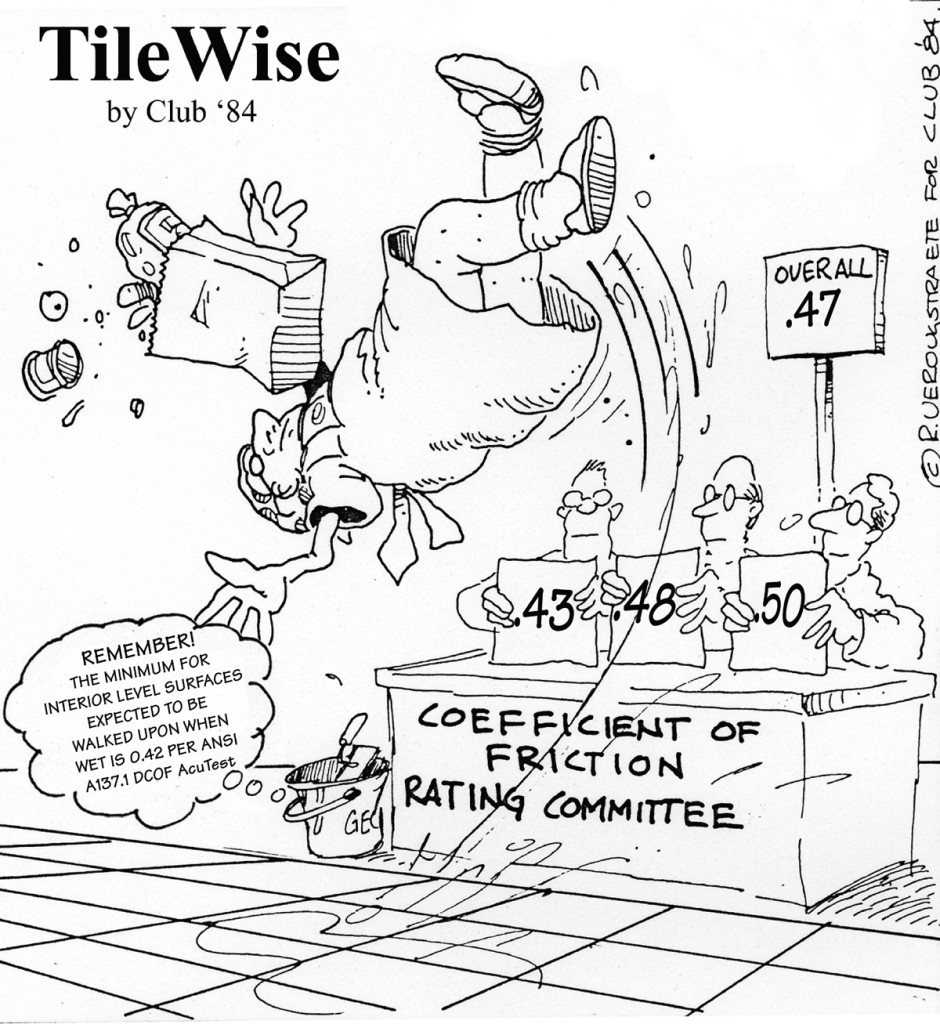Tile Tips
Coefficient of Friction
Whether you are a tile installer or a tile supplier you assume some liability if you sell or install a tile that is not slip resistant, particularly for exterior and interior wet applications. The past standard, which is still used to some degree today, states that a tile in wet conditions should have at least a 0.6 static coefficient of friction rating over a wet tile surface per the ASTM C1028 test method. The new standard, ANSI A137.1, is called the DCOF AcuTest and has a minimum dynamic coefficient of friction rating requirement of 0.42 for interior level wet areas. The DCOF AcuTest is supposed to be a more reliable standard in terms of safety. It doesn’t address interior sloped surfaces or any exterior applications; although other studies in Germany claim that an overall safe rating is 0.45 DCOF per the AcuTest. Make sure you inform your customers about the slip resistance of the tile they have selected, and whether you have the expertise to determine if it’s suitable for the intended application.
Keep in mind that the more textured a tile surface is, the more slip resistant it is. But the more textured a tile surface is means that it will pick up more dirt and will have to be cleaned more frequently, which means more effort will be needed to clean it! So there are tradeoffs. A tile can also be too textured. How a floor is maintained will also affect how slip resistant a tile is over time. So properly maintaining a floor is critical to keeping the walking surface safe. For more specific details, read my article in the October 2012 Construction Specifier magazine “Avoiding the Fall”.

